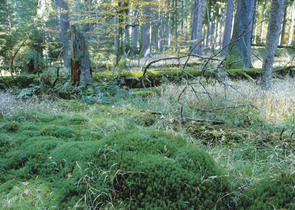The Journal is published by the Nature Conservation Agency of the Czech Republic in cooperation with the Cave Administration of the Czech Republic, the Krkonoše Mts. National Park Administration, the Bohemian Forest Mts. National Park Administration, the Podyjí National Park Administration and the The Bohemian Switzerland National Park Administration. It has been published since 1946.
cs / en
Nature Conservation 1/2008 — 26. 2. 2008 — On Nature in the Czech Republic
History of Establishing Forest Protected Areas in the Czech Republic by 1945

Due to establishing the first two forest protected areas in what is now the Czech Republic, the Czech Republic has become, in addition to Germany and Finland, the country with the oldest nature conservation tradition in Europe.
In 1838, Count Jiří František August de Langueval-Buquoy declared on his Nové Hrady estate in South Bohemia the protection of the Žofín Primeval Forest (38 hectares) by prohibiting economic utilization of the area. In 1858, long-term efforts of Josef John, the forest manager, resulted in the protection of the Boubín Primeval Forest in the near-by Šumava/Bohemian Forest Mts., being a part of the Schwarzenberg noble family estate. Both the Žofín and Boubín Primeval Forests are among the country's most valuable Specially Protected Areas left to natural succession and they are the evidence of the development of ideas and thoughts in the Czech society – from originally romantic idea celebrating beauties of nature in the case of the Žofín Primeval Forest to application of know-ledge of natural forest dynamics in nature-friendly forest management in the Boubín Primeval Forest. Next forest protected areas were declared at the late 19th and early 20th centuries. Natural scientist Rudolf Maximovič became a leading personality in the newly established State Nature Conservancy after founding of independent Czechoslovakia in 1918. He was the author of the first official list of nature monuments in the Czechoslovakia (the so-called New Year's Day Decree from 1933). By 1938, 142 protected areas where the natural forest remainders (“primeval/virgin forests”) or remarkable geological phenomena prevailed were declared. The World War II disrupted all efforts for establishing the nature conservation legal framework. After closing universities by the German nazists, Alois Zlatník, the well-known phytocoenologist, carried out field survey in the natural forest remainders and proposed a comprehensive network of forest protected areas in Moravia and Silesia. Nevertheless, its establishing failed in the post-war years.

